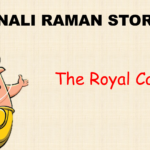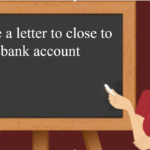A conjunction is a word or a group of words that connects words, phrases, or clauses within a sentence. Conjunctions are essential for creating relationships between different elements in a sentence, facilitating a smooth flow of ideas and enhancing the overall coherence of language.
Types of Conjunctions:
-
Coordinating Conjunctions:
- Definition: Coordinating conjunctions connect words, phrases, or independent clauses of equal importance.
- Examples:
- And: I like tea and coffee.
- But: He is talented, but lazy.
- Or: You can have cake or ice cream.
-
Subordinating Conjunctions:
- Definition: Subordinating conjunctions introduce subordinate clauses and indicate a relationship of dependence on the main clause.
- Examples:
- Because: She went home early because she was not feeling well.
- Although: Although it was raining, they went for a walk.
- If: I will go to the party if I finish my work.
-
Correlative Conjunctions:
- Definition: Correlative conjunctions are pairs of words that work together to connect elements in a sentence.
- Examples:
- Both…and: Both Jack and Jill went up the hill.
- Either…or: You can have either tea or coffee.
- Neither…nor: Neither the cat nor the dog is allowed on the bed.
-
Conjunctive Adverbs:
- Definition: Conjunctive adverbs connect independent clauses and provide a transition between ideas.
- Examples:
- However: She studied hard; however, she didn’t perform well.
- Moreover: I love chocolate; moreover, I enjoy ice cream.
- Nevertheless: It was raining; nevertheless, they decided to go out.
-
Cumulative Conjunctions:
- Definition: Cumulative conjunctions add information to the previous clause without introducing a contrast.
- Examples:
- And: She worked hard and achieved success.
- Plus: The movie was entertaining, plus it had a great soundtrack.
- As well as: She excels in academics, as well as in sports.
-
Adversative Conjunctions:
- Definition: Adversative conjunctions introduce a contrast or opposition between ideas.
- Examples:
- But: He wanted to go, but he had to stay.
- Yet: She practiced a lot, yet she couldn’t win.
- Nevertheless: It was challenging; nevertheless, they persevered.
-
Temporal Conjunctions:
- Definition: Temporal conjunctions indicate the timing or sequence of events.
- Examples:
- After: We can have dessert after dinner.
- Before: Finish your homework before going out.
- While: He watched TV while eating dinner.
-
Comparative Conjunctions:
- Definition: Comparative conjunctions show a comparison between two elements.
- Examples:
- Than: She is taller than her sister.
- As: He is as strong as an ox.
- More…than: She has more books than he does.
-
Conclusive Conjunctions:
- Definition: Conclusive conjunctions introduce the final result or conclusion.
- Examples:
- Therefore: She studied hard; therefore, she aced the exam.
- Thus: He practiced every day; thus, he became a skilled musician.
- Hence: The car broke down; hence, they were late.
-
Explanatory Conjunctions:
- Definition: Explanatory conjunctions introduce an explanation or provide additional information.
- Examples:
- Because: He didn’t go to the party because he was feeling unwell.
- Since: She has been busy since early morning.
- As: As it was raining, they decided to stay indoors.
Understanding the various types of conjunctions is crucial for constructing well-organized and coherent sentences, as conjunctions play a vital role in linking different parts of a sentence.
A) She
B) Likes
C) And
Show/Hide
Answer: C) And
Explanation: “And” is the coordinating conjunction connecting the two items (tea and coffee).
A) I’ll
B) Go
C) If
Show/Hide
Answer: C) If
Explanation: “If” is the subordinating conjunction introducing the condition for going to the beach.
A) Coordinating conjunction
B) Subordinating conjunction
C) Correlative conjunction
Show/Hide
Answer: C) Correlative conjunction
Explanation: “Either…or” is a correlative conjunction, working in pairs to connect alternatives.
A) She
B) Hard
C) However
Show/Hide
Answer: C) However
Explanation: “However” is the conjunctive adverb connecting the two independent clauses.
A) He
B) Likes
C) But
Show/Hide
Answer: C) But
Explanation: “But” is the coordinating conjunction showing contrast between the likes of coffee and tea.
A) Coordinating conjunction
B) Subordinating conjunction
C) Conjunctive adverb
Show/Hide
Answer: B) Subordinating conjunction
Explanation: “While” is a subordinating conjunction, indicating the simultaneous actions of watching TV and eating dinner.
A) She
B) Not only
C) But also
Show/Hide
Answer: C) But also
Explanation: “Not only…but also” is a correlative conjunction emphasizing both qualities.
A) We
B) Leave
C) After
Show/Hide
Answer: C) After
Explanation: “After” is the temporal conjunction indicating the timing of leaving.
A) Coordinating conjunction
B) Subordinating conjunction
C) Correlative conjunction
Show/Hide
Answer: B) Subordinating conjunction
Explanation: “Because” is a subordinating conjunction introducing the reason for going home early.
A) He
B) Thus
C) Skilled
Show/Hide
Answer: B) Thus
Explanation: “Thus” is the conclusive conjunction indicating the conclusion drawn from daily practice.





